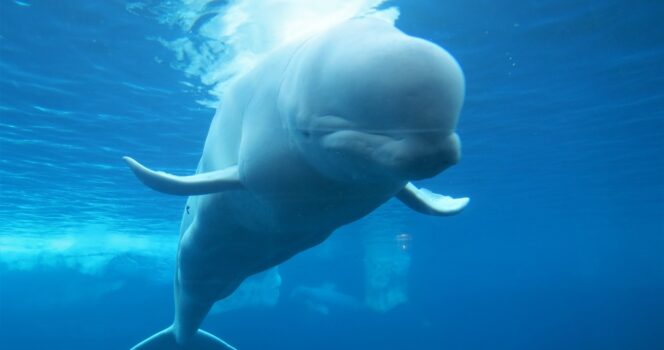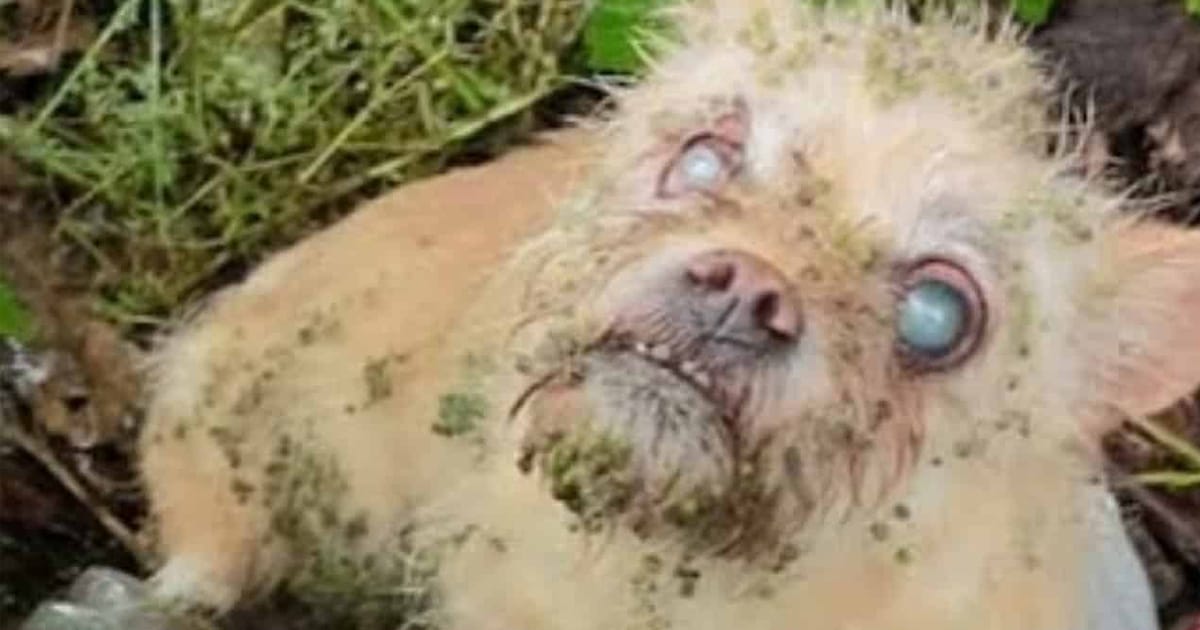

I have always been a little afraid of snakes, but I am lucky to live in an area where poisonous specimens are rare. Nevertheless, I find these creatures incredibly fascinating, and there is a mix of both fear and fascination when I occasionally delve into the lives of the world’s most dangerous reptiles.
In the depths of the African rainforests lives a true wonder of nature – the gaboon viper. This fascinating snake possesses an enchanting mix of cool camouflage, powerful venom, and unparalleled hunting skills.
Today we delve into the intriguing world of this unique animal and reveal the secrets behind its distinctive characteristics and its reign as one of Africa’s most formidable predators…
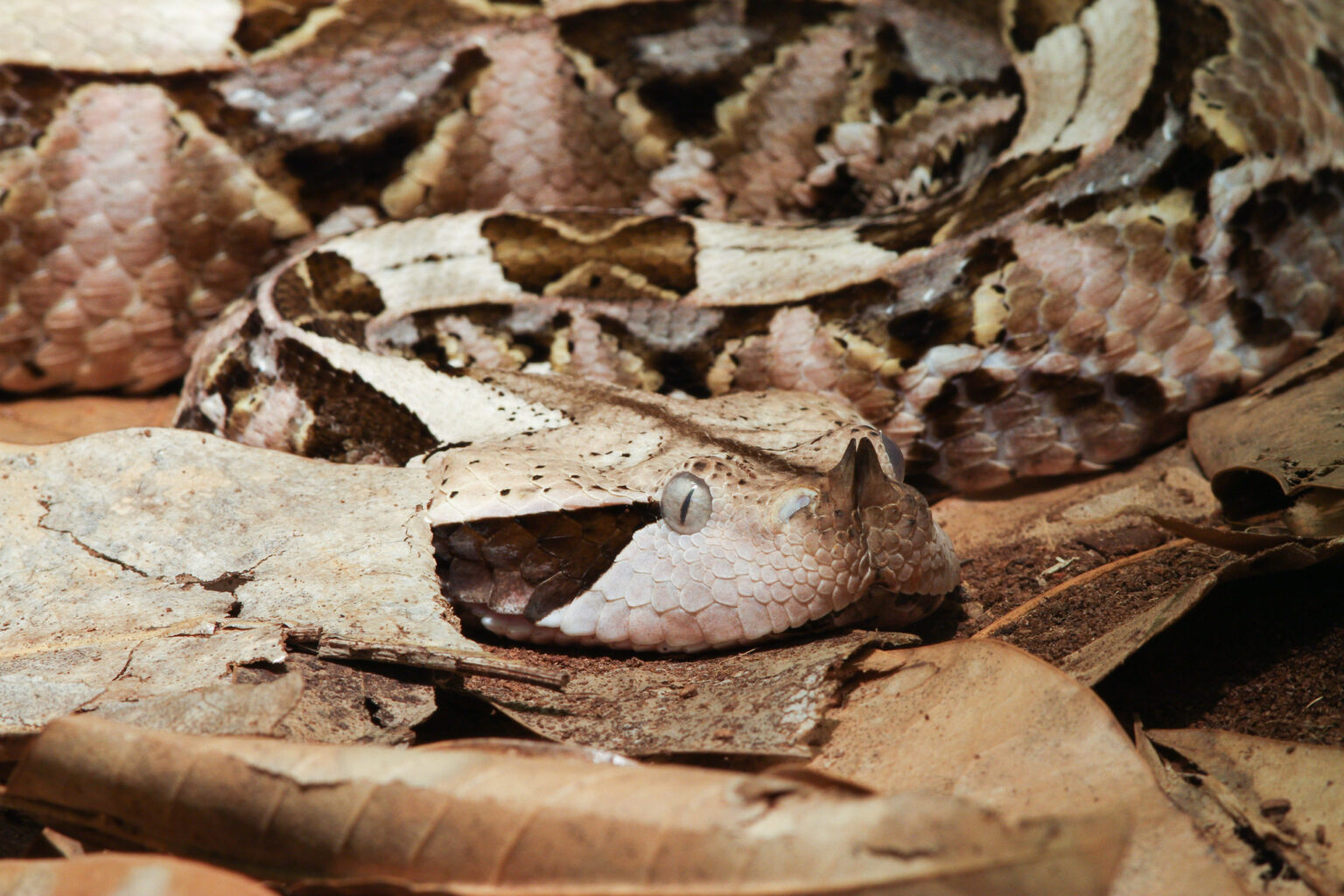

The gaboon viper is considered one of the largest and deadliest vipers on the African continent. Originating from the lush rainforests and arid savannas of Central and West Africa, this elusive snake is known for its vibrant and intricate camouflage, making it a true master of disguise.
The snakes are only surpassed by exceptionally large king cobras, which are over 1.80 meters long and weigh over 10 kilograms.
What is even more chilling is that this snake has fangs that hold the record as the longest of all venomous snakes, measuring up to 5 centimeters. The gaboon viper also possesses one of the most powerful venomous strikes in the snake world.
The venom, a potent cocktail of enzymes and toxins, can cause severe tissue damage, leading to excruciating pain, and if left untreated, it can be fatal.
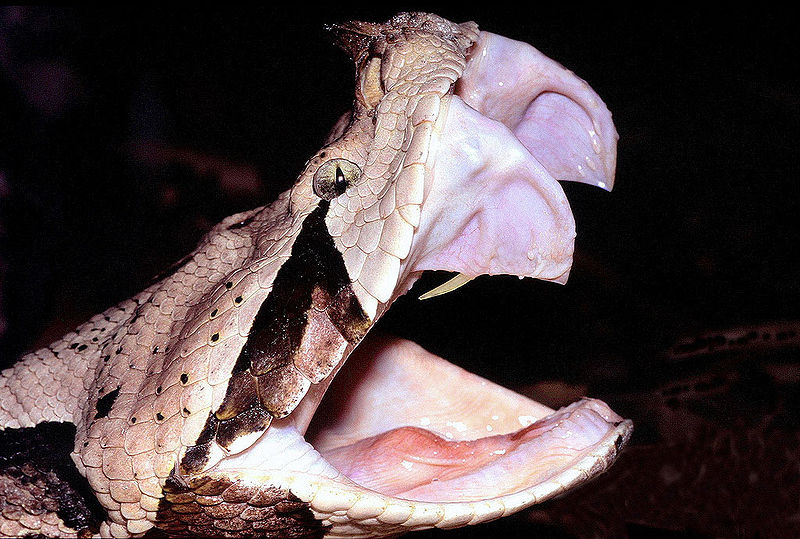

Its head is large and triangular, but it is the intricate skin patterns of the snake that truly capture the imagination. With outstanding camouflage, the snake blends perfectly into the leaf litter on the forest floor – it is almost impossible to see it before it strikes.
The gaboon viper employs a thoughtful and strategic approach to lure its prey into an ambush – it is a very patient creature that spends a long time motionless before attacking. It even dares to tackle adult rabbits, monkeys, and occasionally even a small antelope. This voracious predator showcases its incredible appetite and its ability to consume large prey.
Fortunately, human encounters and snake bites with this species are rare. Due to its preference for remote habitats and generally non-aggressive behavior, reported cases of attacks on humans remain scarce. However, when such incidents occur, they are often the result of accidental encounters where individuals inadvertently step on the snake.
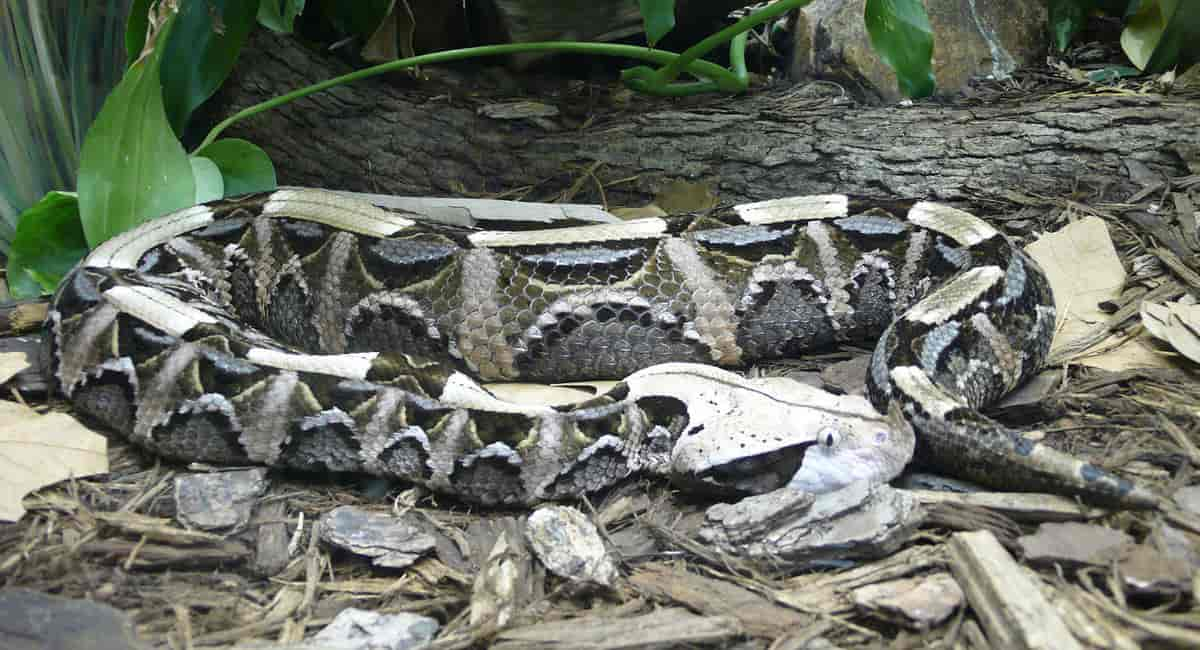

In these unfortunate situations, the consequences can be fatal if an antivenom is not administered. This viper particularly has the unique ability to secure its prey after biting, allowing larger amounts of venom to be injected into the bloodstream.
Although the gaboon viper is naturally found only in Africa, that hasn’t stopped some Americans from keeping them as pets.
Due to its status as the largest viper in the world and its striking appearance, the gaboon viper attracts snake enthusiasts who are eager to have one as a pet. However, this choice can sometimes have disastrous consequences – and that’s exactly what happened in 2022 in Virginia.
According to reports, a man was bitten while keeping the deadly snake as a pet. The police were called to the scene, and the man was quickly transported to Richmond hospital and admitted to the ER in a race against time to save his life.
The situation was complicated by the fact that the VCU Medical Center had depleted its stock of antivenom, which was supplied by the Smithsonian National Zoo. However, the Virginia Aquarium and the Marine Science Center in Virginia Beach, in a commendable effort, contributed an additional 35 bottles of antivenom to aid in the treatment.
It seems that 2022 was an unfortunate year for gaboon viper owners – as just a few months before the incident in Virginia, there were reports of a gaboon viper biting a man in North Carolina. The man needed 44 vials of antivenom and tragically lost several fingers in the process.
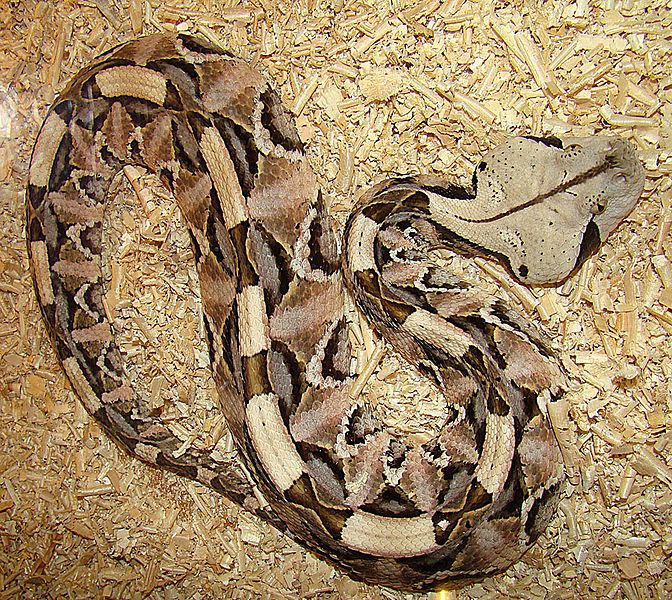

Fortunately, the chances of encountering this poisonous snake in the United States are extremely small, although there have been reports of gaboon vipers ending up in the wild after escaping. In 2015 reported the Georgia Department of Natural Resources a possible sighting of the deadly snake in Milledgeville, Georgia.
In 2021, a video shared by The Reptile Report went viral on social media. A gabon viper was seen on the street, and people were fascinated by its remarkable camouflage against the surroundings. And as it moved, it almost looked like a caterpillar!
The gabon viper is a testament to our wondrous nature and demonstrates its remarkable ability to adapt, survive, and thrive in the African wilderness.
As we contemplate its mysterious existence, we gain a renewed appreciation for the delicate balance of strength and beauty that the natural world harbors – share this article if you agree!

